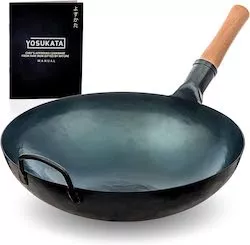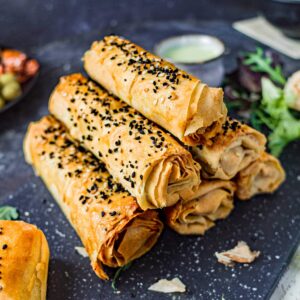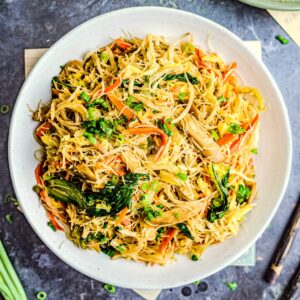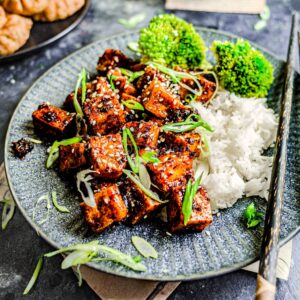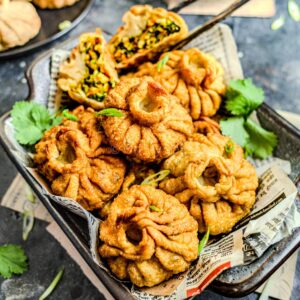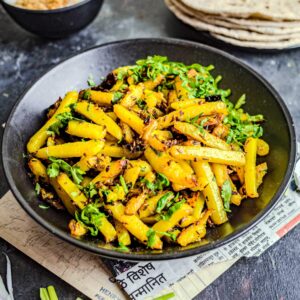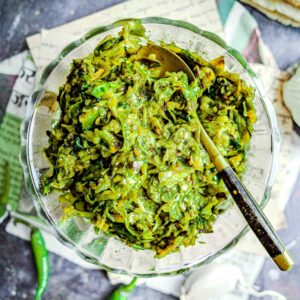Paneer Hakka Noodles
The wok is flaming hot. We’re tossing noodles with crunchy rainbow vegetables, smoky charred paneer, and an umami-rich silky sauce loaded with chilli, garlic, and black pepper. A real crowd-pleaser, it only takes 15 minutes to cook. Introducing: Indo-Chinese paneer hakka noodles.
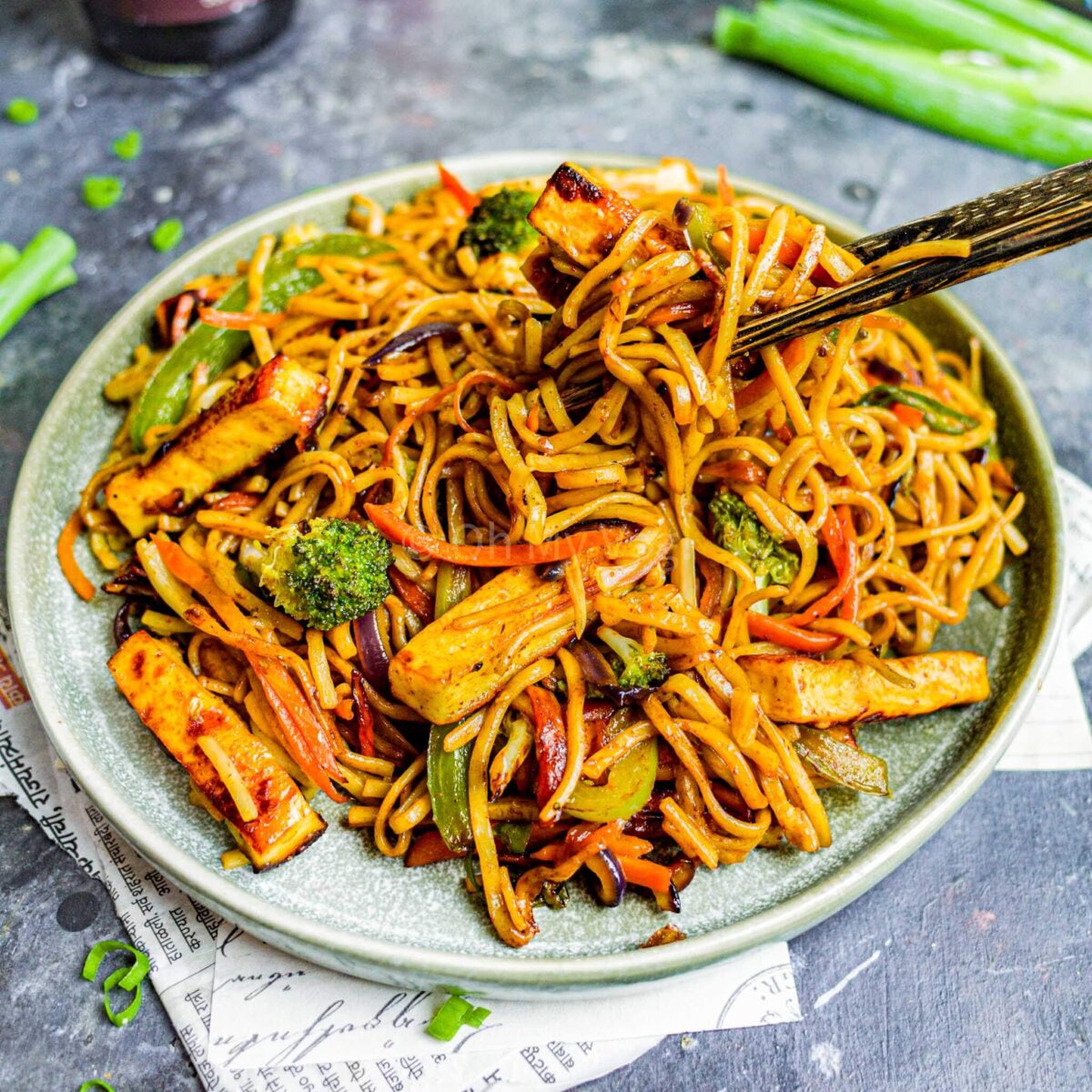
All it takes to make me dream of Indo-Chinese food — a fun fusion mash-up of Indian cuisine and Chinese flavours invented by immigrants decades ago — is a street food video! Is anyone else obsessed with watching Indian street food tours? It’s not doing me any good, since as I’m not based in India, there’s nothing around to fulfil my cravings 😔
So, I did the next best thing: I learned how to make it myself, starting with one of my favourite dishes: paneer hakka noodles.
Considerably healthier than anything I’d eat outside, my recipe for paneer hakka noodles is packed with the goodness of fresh vegetables and protein-packed paneer … plus a ton of flavour from all our aromatics.
This recipe is based on my classic veg hakka noodles, except since it has the addition of paneer, it’s way more robust and filling. And it doesn’t take any extra time, either. I’m talking just 15 minutes from start to finish! That’s quicker than any takeout I’ve ordered.
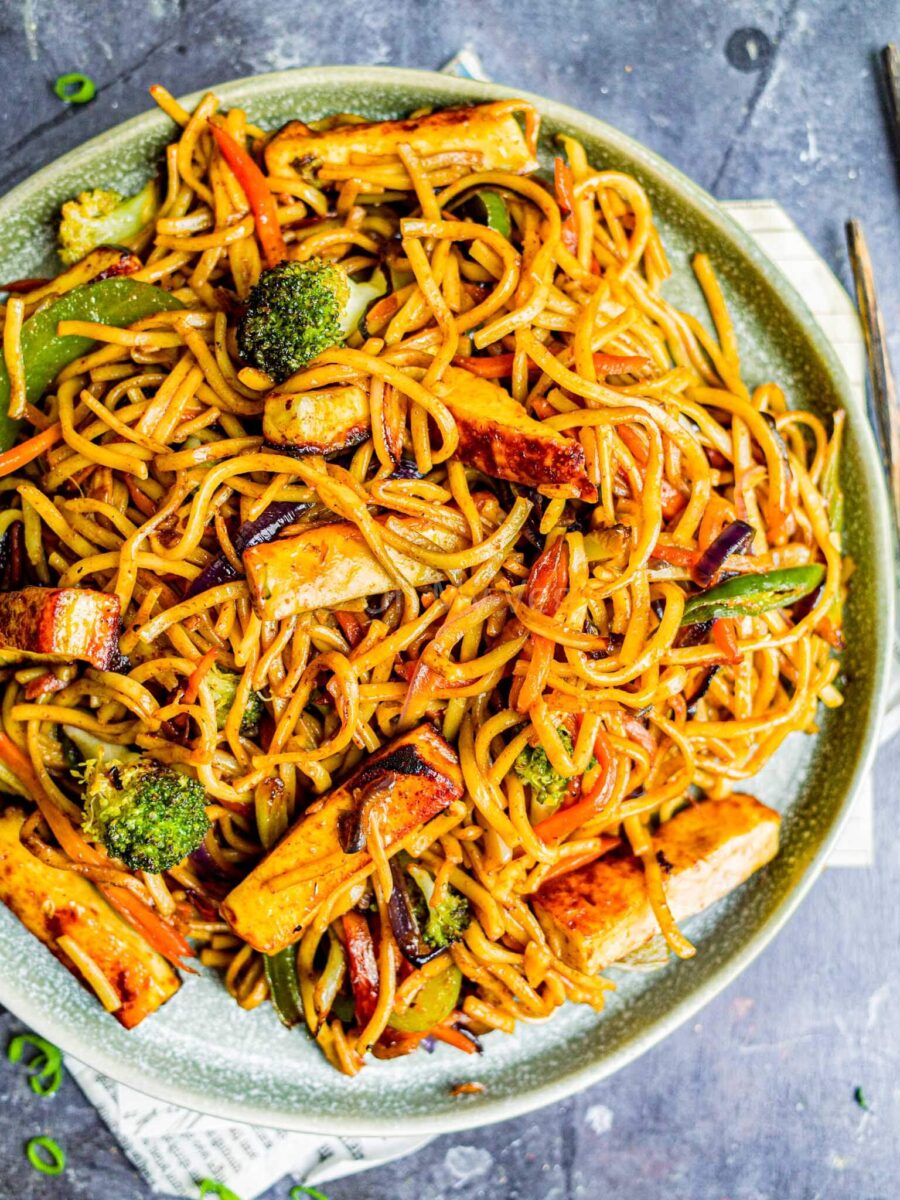
🍜 Ingredients for Paneer Hakka Noodles
If you’re anything like me, you already have a pantry stocked with Chinese and Indian essentials — in which case, you probably already have all the ingredients you need!
If you’re thinking “I don’t have any of these ingredients,” don’t fear: your local Asian market will stock everything required for this easy paneer hakka noodles recipe. Plus, this is a budget-friendly recipe.
Let’s delve into what ingredients you’ll need (full quantities in the recipe card below):
- Hakka noodles are the main affair. Similar in texture to egg noodles, they are usually sans-egg (Indian vegetarians typically don’t eat eggs). While you can find hakka noodles at a local Indian market, you can substitute them for Chinese noodles.
- Oil is essential for stir-frying. Use a neutral oil that can withstand high heat.
- Aromatics such as spring onions, garlic, sharp green chillies, and punchy warming ginger each build layers of flavour, with the latter adding subtle heat.
- Vegetables such as onions, bell peppers, sliced carrots, and crunchy broccoli florets add texture and beautiful colour variation to the noodles. It’s a great way to get your 5 a day! You can play around with combinations — more on this below.
- Paneer is our vegetarian protein. Paneer is an Indian cheese with a mild flavour and soft yet firm texture that doesn’t melt over high heat. It’s the perfect addition to these Indo-Chinese noodles.
- Black pepper provides a fruitier spice.
- Dark soy sauce is rich, salty, umami-packed, and full of depth. It has a caramel-esque flavour and glorious brown colour.
- Chilli sauce is a must for paneer hakka noodles. I like to use Maggi masala sauce — but use your favourite flavours. Personally, I’m not too fond of green chilli sauce.
🥦 Customisations and Variations
Once you’ve got the basic recipe down pat, experiment! Here are a few ways you can play with this recipe while retaining its tried-and-tested flavours:
- 🌶️ Adjust the spice levels to suit your preferences! If you’ve got a high heat tolerance, play with fire and add more spice — my favourite way to do this is by adding more fresh green chillies, but dried chilli flakes, fresh red chillies, or more chilli sauce is also acceptable. Alternatively, tone things down by reducing or omitting the fresh green chillies.
- 🥚 Vary the protein. Why not add other protein sources? For “eggitarians,” scrambled eggs work particularly well in Indo-Chinese hakka noodles. For vegans, tofu, tempeh, seitan, and/or cashew nuts are also excellent sources of plant-powered protein.
- 🥬 Add more vegetables such as baby corn, red bell peppers, mushrooms, beansprouts, bamboo shoots, water chestnuts, or even aubergine (eggplant) and mushrooms. This is a fantastic way to play with texture!
- Change how you cook the paneer: Instead of frying the paneer, add it raw for a softer texture and milder, less smoky taste. You can also vary how you cut the paneer — experiment with cubes, strips, or slices.
- 🍋 Add a touch of acidity by mixing a dash of vinegar into the sauce, or adding a squeeze of lemon or lime juice when serving.
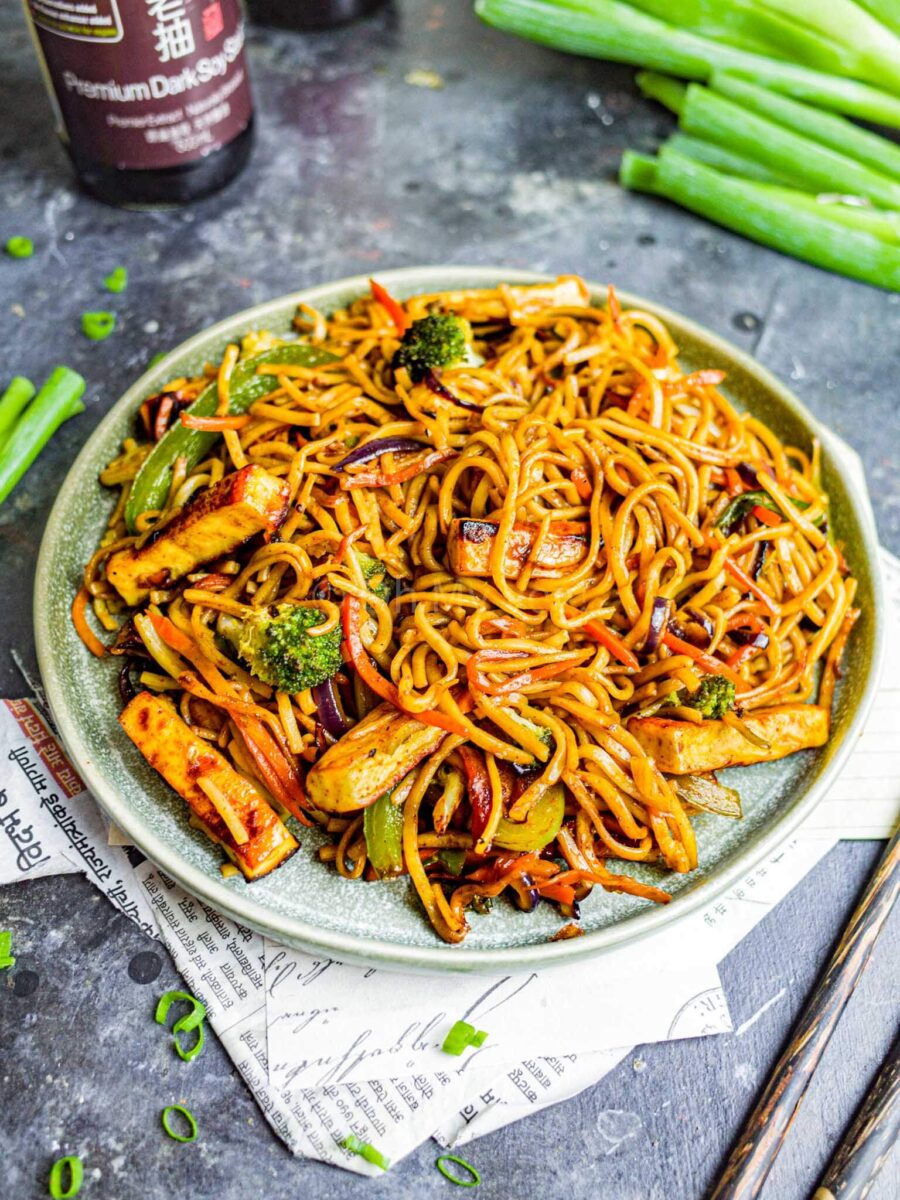
👩🍳 How to Cook Paneer Hakka Noodles
Grab your wok and your apron — we’re about to get hot (and not bothered!) in the kitchen.
Making paneer hakka noodles takes less than 20 minutes — 15 minutes if you’re quick — but because the recipe moves so quickly, I always recommend you get acquainted with the process before you start cooking.
- Boil the noodles according to package directions, until just al dente. Drain immediately.
- Mix the hakka noodle sauce: combine soy sauce, chilli sauce, black pepper, and optional sugar in a small bowl.
- Stir fry the aromatics in a large wok with oil.
- Stir fry the vegetables and paneer until the vegetables are just cooked yet retaining their crunch, and the paneer has golden spots.
- Add the cooked noodles to the pan and coat in the sauce. Mix everything well then turn off the heat and serve.
As always, you’ll find more detailed recipe instructions in the card below, complete with timings.
👩🏫 Pro Tips
Making good paneer hakka noodles is easy.
Making paneer hakka noodles better than street-style vendors and restaurants?
That can be tricky, but my tried-and-tested recipe plus these pro tips are here to help you elevate your basic noodles to a level that’s on par with or even better than outside food.
- Prep all your ingredients before you start cooking. Stir-frying is a heat-heat, high-intensity process. Things move VERY fast and burn quickly — you don’t want to cut your vegetables while stir-frying your garlic. Have all your vegetables cut before you turn on the stove, and mix your sauces beforehand.
- Use high-quality paneer. Paneer is the star of the show in these hakka noodles. Avoid any brand that’s too firm and squeaky; good quality paneer should be soft, very white (not yellow) and slightly springy.
- Pat your paneer dry before stir-frying for the best, crispiest textured paneer. Skip this step if you’re adding the paneer raw!
- Stir-fry on high heat to maintain the crunchy texture of the vegetables and infuse the paneer hakka noodles with “wok hei” or the “essence of the wok”; a delicious smoky aroma.
- Worried about your noodles clumping? Toss them in a drizzle of oil after draining, and avoid overcooking.
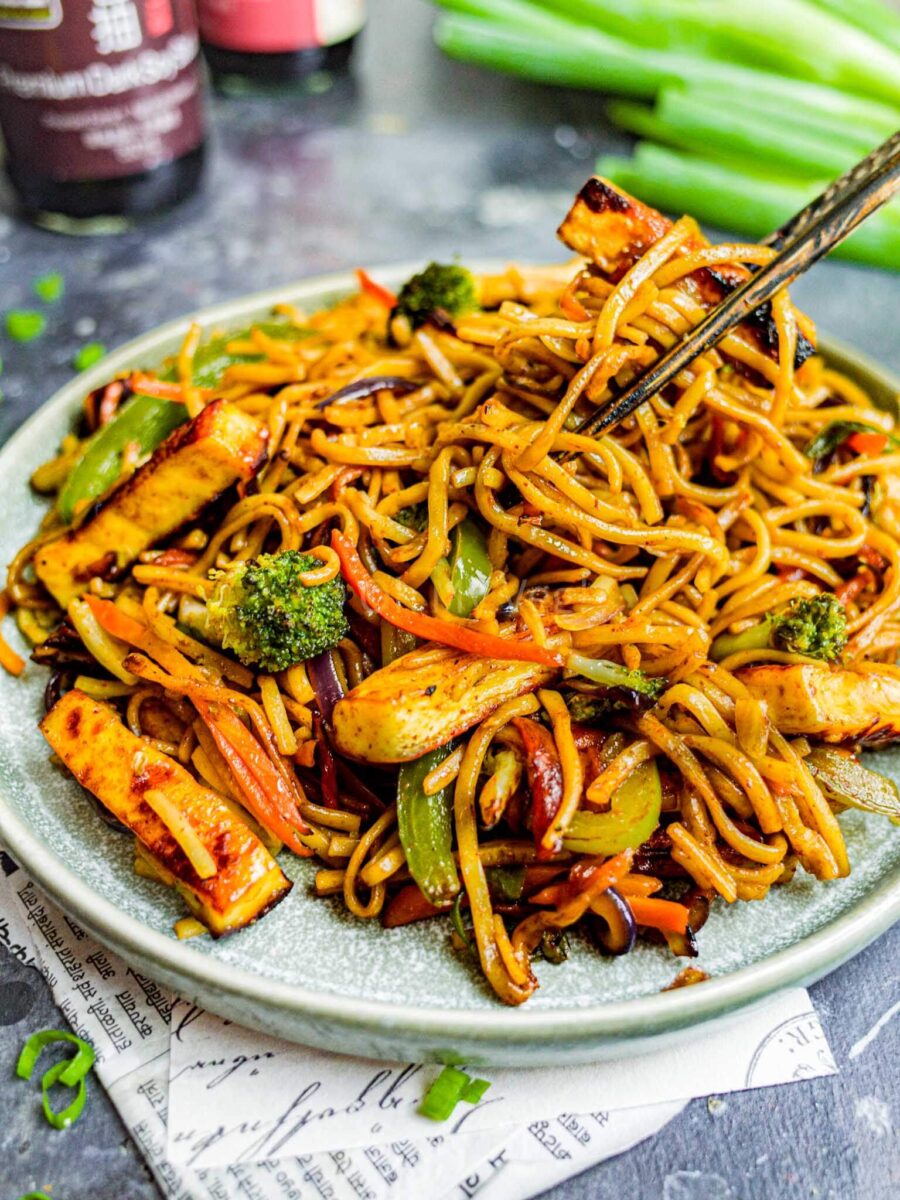
🥟 Serving Suggestions
Paneer hakka noodles are best served steaming hot. However, it reheats exceptionally well, making it a great option for work/school lunch boxes or parties.
This recipe is intended to be served as a main dish. I love accompanying it with beloved starters like spring rolls, tofu potstickers, manchow soup, crispy onion bhajis, or sweetcorn soup. Alternatively, go a healthier fusion route with a Hawaiian-style tofu watercress salad.
However, you can also serve paneer hakka noodles as a side dish — simply decrease the portion size! Pair it with other favourites like chilli paneer, garlic chilli fried rice, and mushroom Manchurian.
🤩 Why You Should Make Paneer Hakka Noodles
If you tried this paneer hakka noodles recipe — or any other recipe on my website — please leave a 🌟 star rating and let me know your thoughts in the ✍️comments at the bottom of the page. Thanks for being a part of my community!
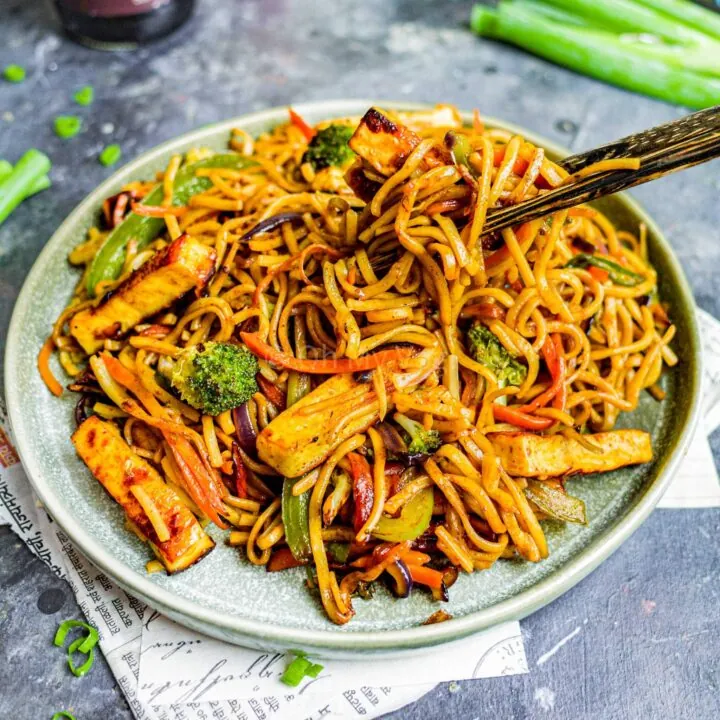
Paneer Hakka Noodles
Paneer hakka noodles is an Indo-Chinese dish of stir-fried noodles coated in a spicy umami-rich sauce, with crisp vegetables and charred paneer.
Ingredients
- 200g Hakka Noodles
- 1.5 tbsp Neutral Oil
- 40g Spring Onion Whites, finely sliced
- 3 Garlic Cloves, minced
- 2 Green Chilis, finely sliced
- 1/2 inch Piece Ginger, minced
- 200g Paneer, sliced into thick strips
- 100g Carrot, julienned
- 100g Broccoli, cut into small florets
- 80g Bell Pepper, julienned
- 40g Red Onion, finely sliced
- 1/2 tsp Ground Black Pepper
- 1 tbsp Dark Soy Sauce
- 1 tbsp Chilli Masala Sauce
Instructions
- Boil the noodles according to package directions, until just al dente. Drain immediately and toss in a drizzle of oil to avoid clumping.
- Mix the hakka noodle sauce. In a small bowl, whisk soy sauce, chilli sauce, black pepper, and optionally, a dash of sugar.
- Stir fry the aromatics. In a large hot, heat oil over medium-high heat until smoking. Add the spring onion whites, minced garlic, green chillies, and ginger. Stir-fry for a few seconds, until aromatic.
- Stir fry the vegetables and paneer. Next, add the broccoli and paneer to the pan. Cook until both are slightly browned, then add the remaining vegetables: carrots, bell peppers, and red onions. Cook, moving often, until the vegetables are just done, but retain most of their crunch.
- Finish the paneer hakka noodles. Add the cooked noodles to the pan and pour over the prepared stir-fry sauce. Toss to coat in the sauce and mix well. Turn off the heat and serve hot.
Notes
Be sure to prep the vegetables before starting your wok.
Recommended Products
As an Amazon Associate and member of other affiliate programs, I earn from qualifying purchases.
Nutrition Information:
Yield: 2 Serving Size: 1Amount Per Serving: Calories: 737Total Fat: 49gSaturated Fat: 20gTrans Fat: 1gUnsaturated Fat: 23gCholesterol: 110mgSodium: 2478mgCarbohydrates: 48gFiber: 9gSugar: 19gProtein: 30g
Nutrition information isn’t always accurate.





